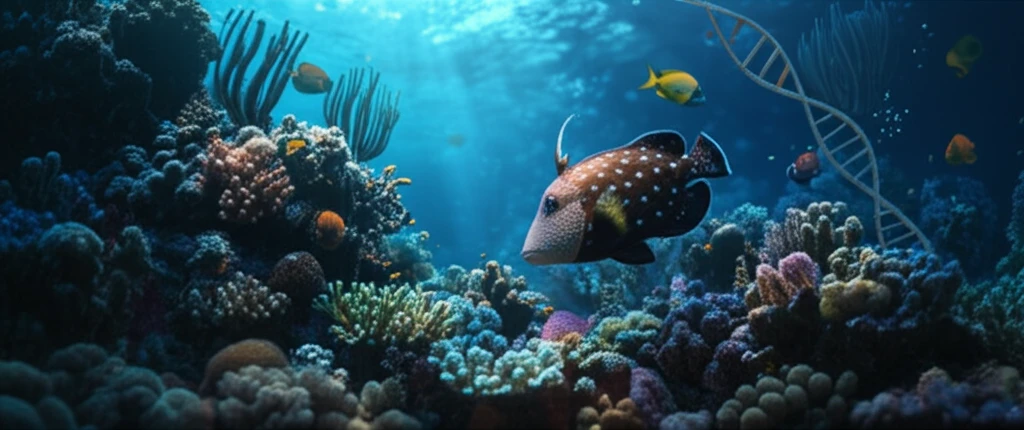
Unlocking the Secrets of the Mottled Spinefoot: Why Genetic Research Matters for the Future of This Reef Dweller
"Dive into the groundbreaking study of Siganus fuscescens and discover how microsatellite markers are changing the game for conservation efforts."
Imagine a fish that navigates the vibrant coral reefs of the Indo-Pacific and the eastern Mediterranean. This is the mottled spinefoot, Siganus fuscescens, a species known for its unique appearance and ecological importance. The mottled spinefoot, also referred to as rabbitfish due to its perceived resemblance to rabbits, dwells in diverse environments, from reef flats and seagrass meadows in tropical zones to reef areas or shallow waters at higher latitudes.
However, this seemingly abundant fish faces increasing threats. Overfishing, habitat degradation, and environmental changes have placed pressure on Siganus fuscescens populations. To ensure its survival, scientists are turning to advanced genetic tools to understand its diversity and population structure.
A recent study published in Genetics and Molecular Research delves into the development of novel polymorphic microsatellite markers for Siganus fuscescens. This research offers new insights into the genetic makeup of this species and provides valuable resources for conservation management. In simpler terms, scientists are creating a genetic 'toolkit' that will help them track and protect these fish.
Why Genetic Markers are Essential for Marine Conservation

Microsatellites, also known as simple sequence repeats (SSRs), are short, repetitive DNA sequences found throughout the genome. These markers are highly variable between individuals, making them incredibly useful for genetic studies. Imagine these markers as unique identifiers or fingerprints that allow researchers to distinguish between different fish populations.
- Tracking Genetic Diversity: Understanding how genetically diverse a population is can reveal its ability to adapt to changing environments.
- Assessing Population Structure: Knowing how different populations are connected helps in designing effective management strategies.
- Determining Paternity: Identifying the parents of offspring is crucial for understanding reproductive success and population dynamics.
- Managing Gene Flow: Ensuring that different populations can interbreed prevents genetic isolation and maintains overall health.
The Future of Siganus fuscescens: A Genetically Informed Approach
This study provides a foundation for future research and conservation efforts. With these new microsatellite markers, scientists can now more effectively evaluate the genetic diversity, population structure, and gene flow of Siganus fuscescens. This knowledge will be instrumental in developing targeted conservation strategies to protect this valuable species and ensure the health of our marine ecosystems for generations to come. In a world facing unprecedented environmental challenges, such genetic tools offer a beacon of hope for preserving biodiversity.
